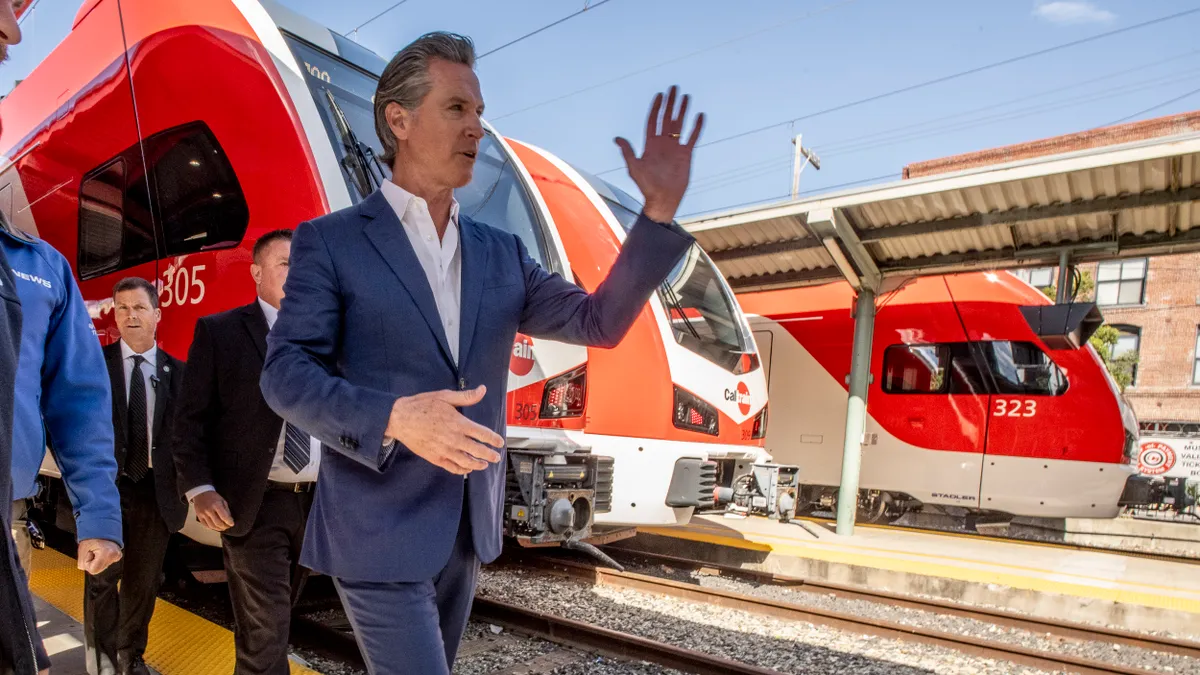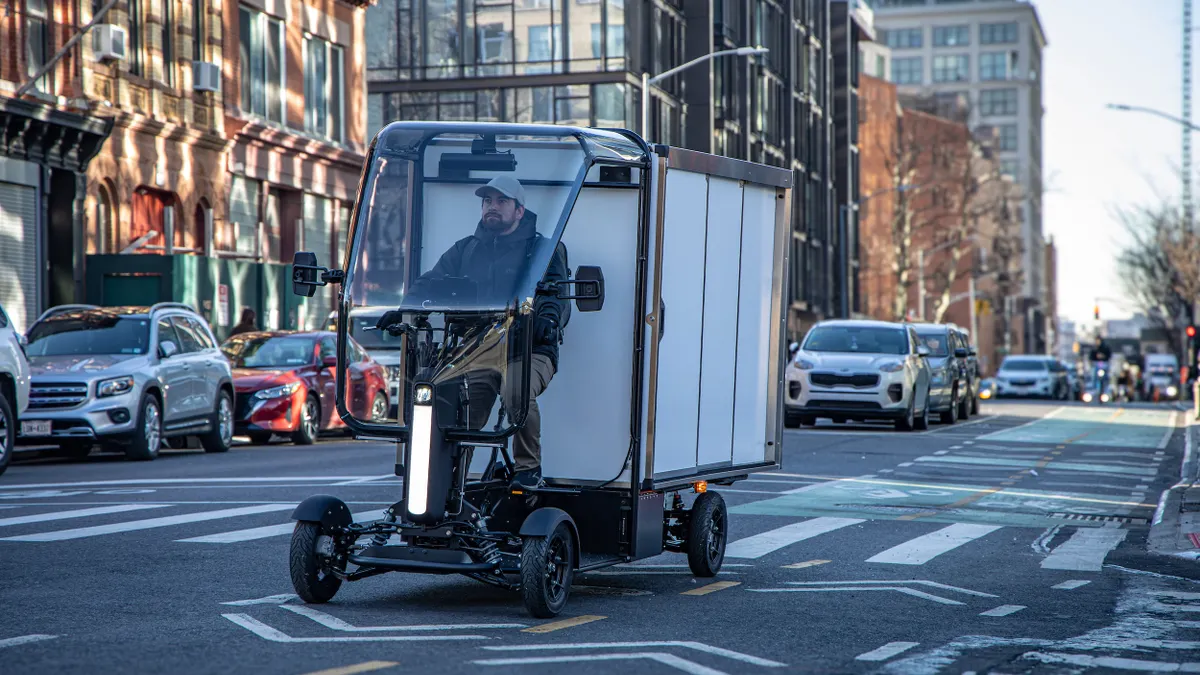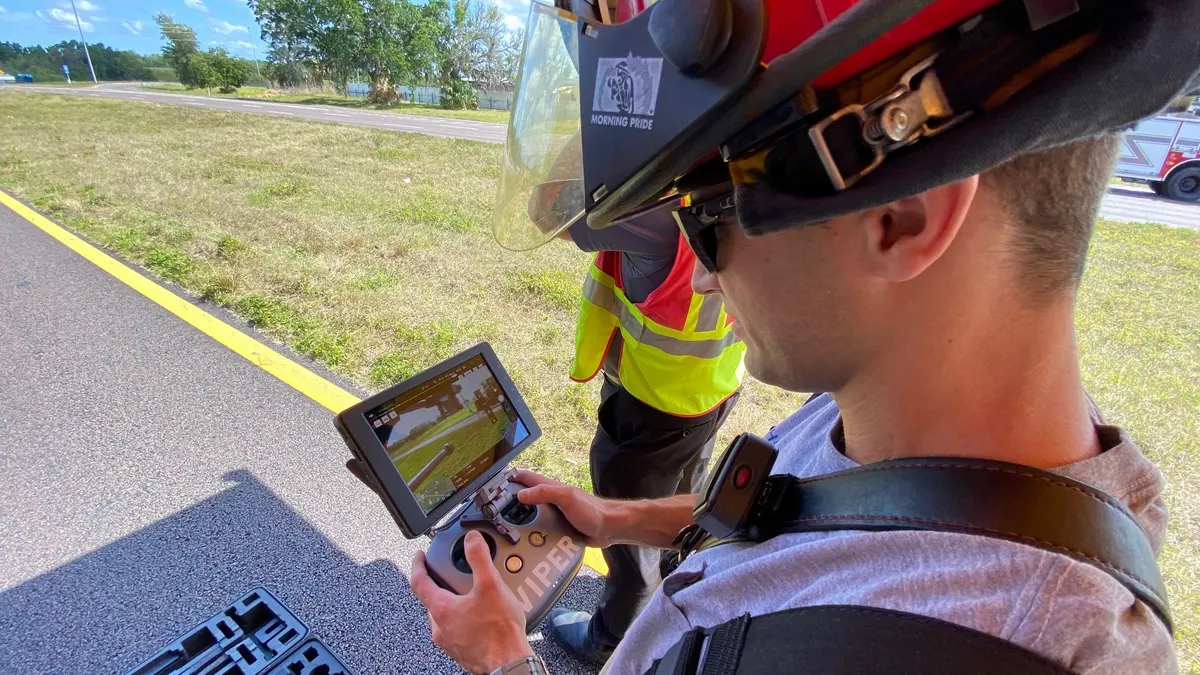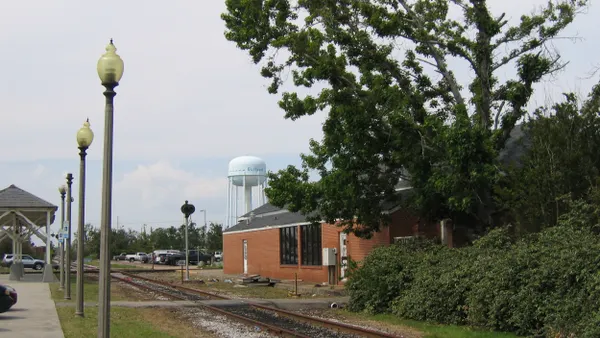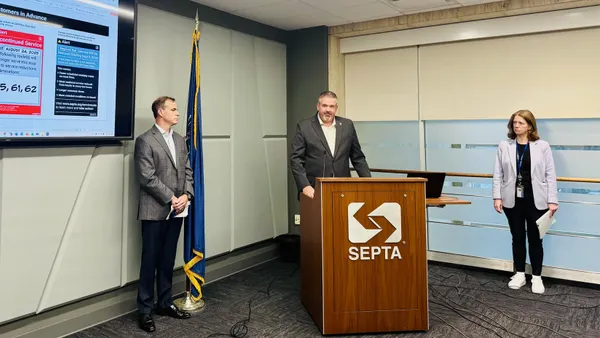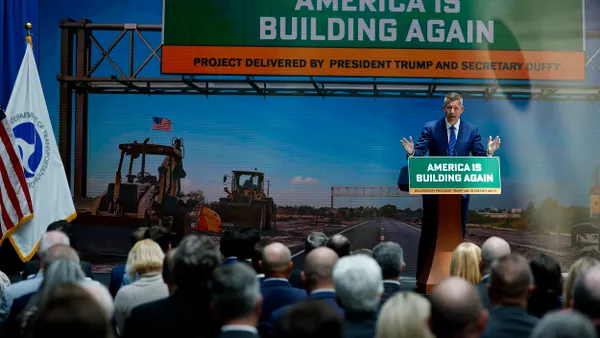Dive Brief:
- California Gov. Gavin Newsom released a $310 billion plan last week to create a fully connected, zero-emission passenger rail network across much of the state by 2050.
- The proposed state rail plan includes intercity, regional and local transit systems, with high-speed rail projects serving as the spine of the far-flung network.
- The plan calls for a combination of local, state and federal funds along with private-sector investment to meet the plan’s costs.
Dive Insight:
The state proposal follows two California commuter railroads already committing to running zero-emission trains.
Caltrain, a commuter line that serves the San Francisco Peninsula, began operating electric trains in August, replacing diesel-powered trains along 51 miles of its route. In Southern California, the San Bernardino County Transportation Authority began testing hydrogen-battery trains in November and plans to put them into service by the end of this year.
The state plan aims to ultimately shift close to 200 million daily passenger miles from highways to rail, reducing traffic congestion and greenhouse gas emissions while improving safety for travelers in the state.
“Our vision is simple: by 2050, every Californian should be able to choose rail as a way to get to their destination, near or far,” Newsom said in a statement.
It is an ambitious project, UCLA Professor of Urban Planning at the Luskin School of Public Affairs Michael Manville said in an email. “Shifting 200 million passenger miles off the roads is a big shift,” he said, but added that it’s not impossible. Still, “Pulling vehicles off the road doesn't prevent other vehicles from taking their place,” Manville said.
A portion of California’s high-speed rail projects to connect San Francisco and Los Angeles is under construction in the state’s Central Valley, and the Brightline West project has begun construction to connect Las Vegas and Southern California. A third high-speed rail project, in planning, would connect the two across the Antelope Valley north of LA.
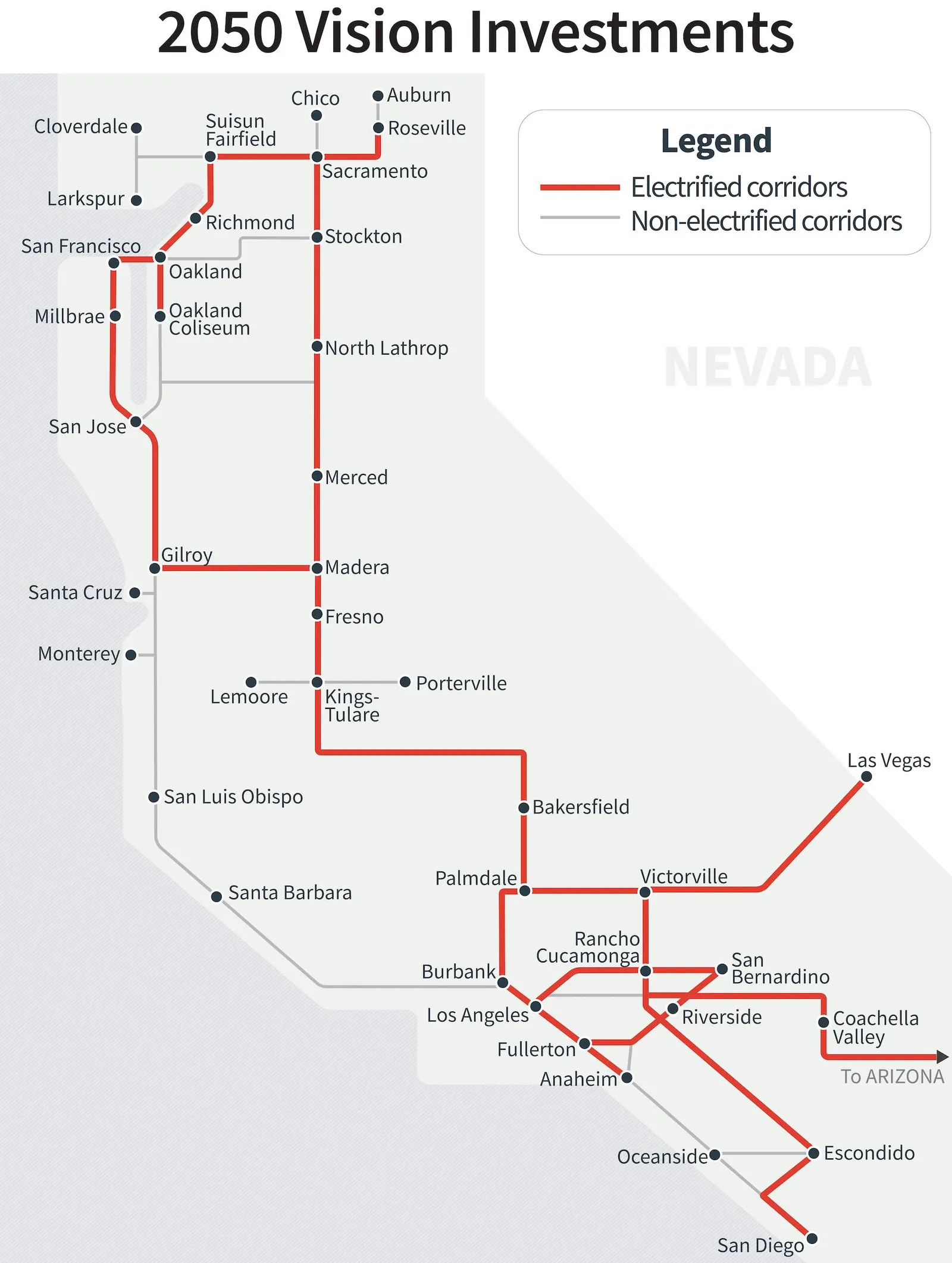
A map published by the governor’s office shows additional passenger rail lines serving San Diego, Sacramento and Oakland, California. To electrify many of these lines will require building electric catenary infrastructure across 1,500 miles of track by 2050. Where that’s not feasible, hydrogen and battery-electric trains could allow for zero-emission operations.
However, Manville warns, “We've spent a lot of money on rail in the last 20 years and have not seen strong results, so I think it's natural to look at big ambitious goals like this with some caution.”



